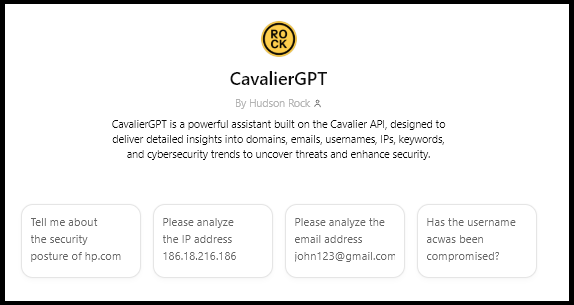Hudson Rock's website provides that same message for every user name.
Hudson Rock is an "aggregator" of data and, unless your user name that you entered is absolutely unique, the website free feature provides an aggregated, generic tally of data and the generic "infected by an infostealer" is not necessarily accurate. It is also the same with compromised passwords - HudsonRock is aggregating the data that it scrapes and presenting it to you in an un-differentiated form.
Try entering "
william@gmail.com" on the Hudson Rock website. 1,337+ "services" infected. That is because people all over the world use the username "
william@gmail.com" without even having a "
william@gmail.com" account, and those systems have been compromised in one way or another. There's other reasons too for the large "infected" numbers.
View attachment 288204
To be more sure, you need the Hudson Rock report that lists your specific device name (at the time of infection) and your exact public IP address. (You can try the "Hudson Rock Free Report" option at the top of the page.)
Enter your public IP address into HudsonRock's free online tools instead of your username. You will still receive an "aggregated" set of numbers of data collected across many, many data sources.
You need the Summary of Infections report (example):
Announcing the launch of CavalierGPT, the groundbreaking AI Bot that retrieves and curates data to empower cybersecurity researchers.

www.infostealers.com
It is wrong to conclude that whatever happened to your devices was due to a data breach. That is just a very imprecise guess. There is insufficient infos to make that determination. The only definitive, accurate answer can be determined by a forensic investigation of both the devices and cloud resources.
If it was a data breach, you don't know where the breach occurred, and therefore you need to close every single one of your online accounts and open new ones. Just changing logon credentials can be "not adequate." At the very least you should report that you think your data has been compromised and report it to every single online account that is valuable to you.

www.infostealers.com
